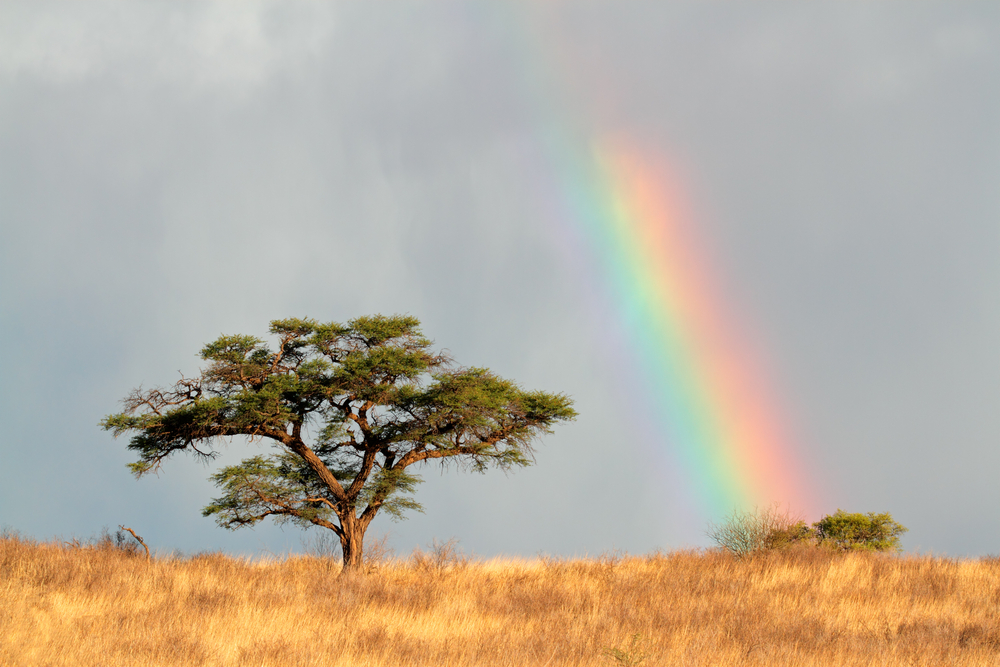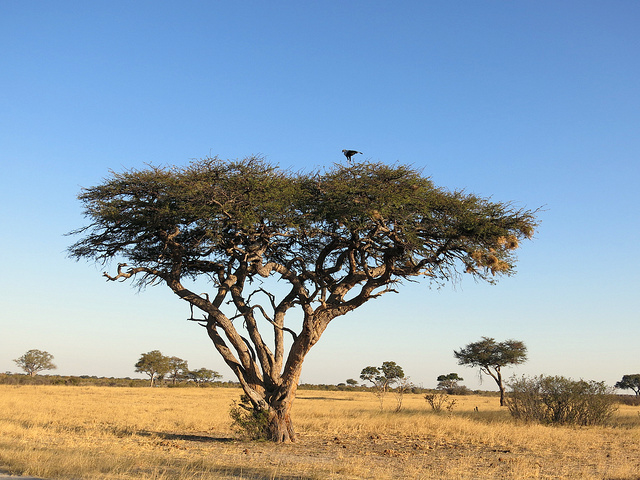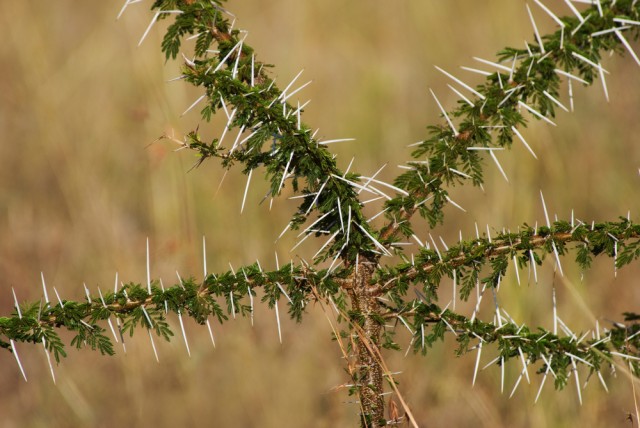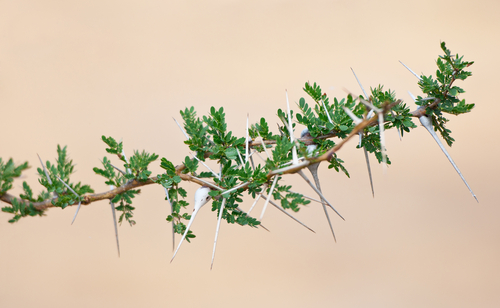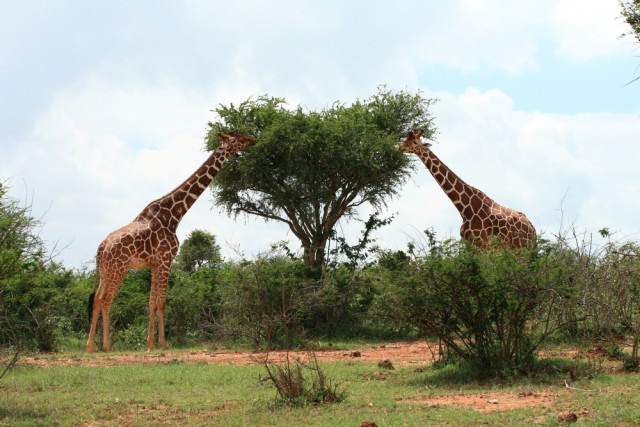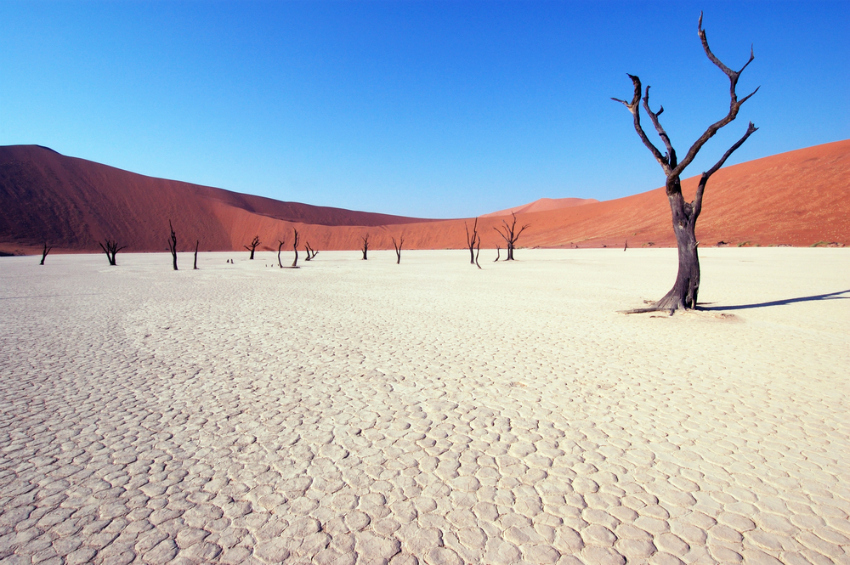Acacia trees are without a doubt the most iconic trees in Africa (besides baobabs, a close runner-up). The subject of countless thousands of silhouette sunset photos (like the one above), this picturesque tree is inextricably linked with vast African savannas and epitomizes the seeming exotic-ness of the continent.
But how much do you really know about the acacia — which, incidentally, is not just one species? Read on for some fascinating and crucial facts about acacia trees.
There are thousands of species
There are over 1,300 species of acacia worldwide, primarily in Australia and Africa, and to a lesser extent in the Americas, Asia and Europe.
They are abundant in Africa
Acacias are especially numerous on the plains of southern and eastern Africa, where they are well-known landmarks on the veld and savanna.
They are an essential part of the food chain
Acacias provide food and habitats for a variety of animals, from hoofed mammals and birds to countless species of insects.
They are the source of gum arabic
Acacia senegal, found in Sudan and the northern Sahara, is the main source of gum arabic, which has been used for over 2,000 years in paints and watercolors. The substance is also used in candy, medicines, calico printing, dyeing, and in the making of silk, paper, and cosmetics.
They protect themselves
The African acacia is self-protecting in many ways. First, most species have long, sharp thorns, which prevent (most) animals from eating their leaves. Second, sometimes stinging ants live inside hollowed-out thorns, which provides another disincentive for predators. And furthermore, the trees create poisonous chemicals when they detect an “assault.” Not only can these chemicals be fatal to animals, but the trees “warn” nearby acacias to start making their own poison. How it works: When the leaves begin to fill with poison, they release ethylene gas, which drifts out of their pores and toward other acacias (within 50 yards). In response, the nearby trees begin to manufacture poison themselves.
They can ‘whistle’
“Whistling” acacias (Acacia drepanolobium) are so named because thorns which no longer house ants make a whistling sound when the wind blows over the entrance hole.
There’s a reason they are dome-shaped
The umbrella-dome shape of most African acacias is an evolutionary adaptation that enables the trees to capture the maximum amount of sunlight, with the smallest of leaves.
Giraffes love them
Giraffes “prune” the undersides of acacia trees, yet surprisingly do not get pierced by the thorns. They carefully wrap their long, prehensile tongues between the spines and delicately remove the tender tasty leaves.
They are strongly identified with the Kalahari
Acacia erioloba, known as the giraffe thorn or camel thorn tree, is the most recognizable tree in the Kalahari desert (and elsewhere in Angola, Botswana, Mozambique, Namibia, South Africa, Zambia, and Zimbabwe). It can grow up to grow up to 18 m tall and live up to 200 years. The tap root can grow up to 60 m, allowing it to access deep ground water sources and live in extremely dry climates.
They are a hallmark of Deadvlei
Deadvlei in Namibia is famous for its 800-year-old dead acacias, which still stand because the climate in the desert is so dry that they were never able to decompose.
Related content on AFKTravel:
12 Things You Probably Didn’t Know About The Majestic Baobab Tree
The Top 3 Reasons You Should Stay In A Treehouse At Tongabezi
Fungus Is Fab! 10 Shockingly Gorgeous Photos of African Fungi
Want to discover the finer side of Africa? Sign up for our weekly newsletter.

